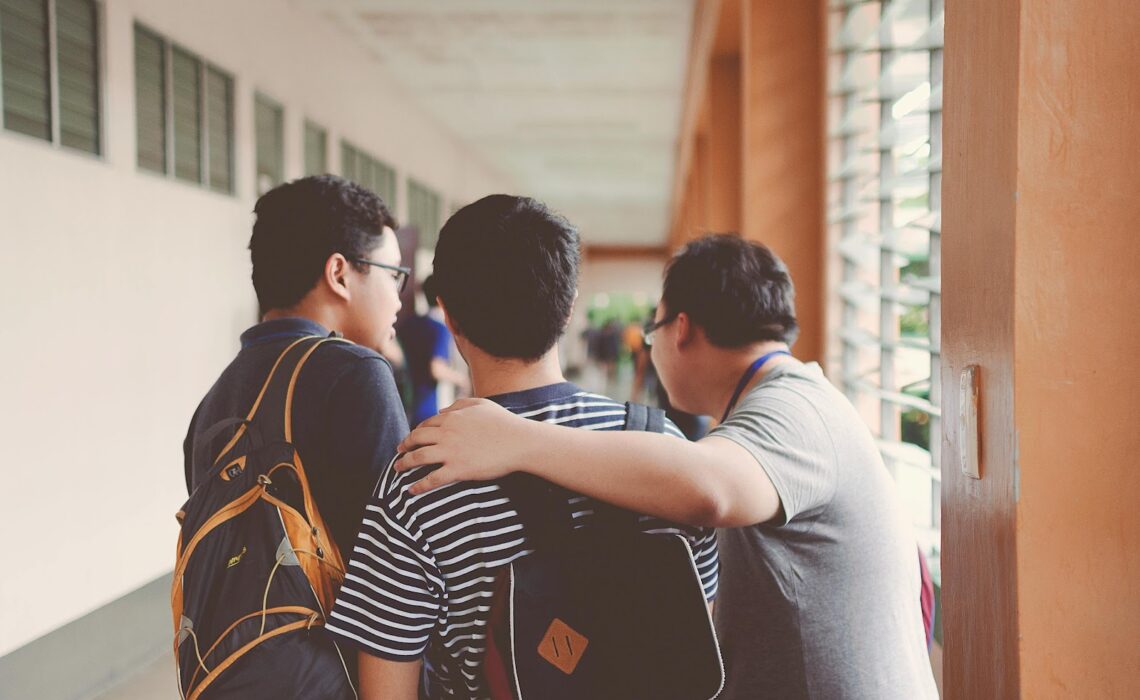
A fundamental right that serves as the cornerstone for both individual and societal growth is access to high-quality education.
However, there are frequently obstacles in the way of Deaf students obtaining an equal education.
Their academic progress and general well-being may be hampered by communication difficulties, inadequate accommodations, and ignorance of Deaf culture.
To close these gaps and guarantee that Deaf students have the same opportunities as their hearing counterparts, laws protecting them are essential.
Even though many nations have passed laws to support accessibility, more work must be done to guarantee that these safeguards are fully implemented in educational environments.
The Importance of Inclusive Education
The foundation of inclusive education is the idea that all children should have equal access to educational opportunities, irrespective of their physical capabilities or disabilities.
This entails giving Deaf students access to resources, teaching strategies, and suitable communication tools that meet their individual needs.
To prevent Deaf students from being isolated from their peers, schools must also establish an atmosphere that promotes comprehension and integration.
In the past, mainstream educational systems have marginalized Deaf students.
They frequently struggle to get the resources they need to learn, engage in class discussions, and get the help they need from teachers.
Specialized services, like speech-to-text systems or sign language interpretation, are sometimes not acknowledged or offered.
Many Deaf students consequently lag in their studies—not because they are incapable, but rather because of the obstacles posed by an inaccessible educational system.
Governments and educational establishments must guarantee that Deaf students are not left behind.
To create an educational environment where Deaf students can flourish, legal frameworks that protect their rights are crucial.
Key Laws Protecting Deaf Students
To safeguard the educational rights of Deaf students, numerous laws and international agreements have been established.
The purpose of these laws is to guarantee that Deaf students receive the accommodations they require to thrive academically.
The United Nations Convention on the Rights of Persons with Disabilities (CRPD), which supports the right to education for people with disabilities, is one of the most important pieces of legislation in this field.
The significance of inclusive educational systems that meet the unique needs of all students, including those who are Deaf, is emphasized by the CRPD.
It urges governments to take action by providing the required resources and support to guarantee Deaf students have equal access to education with other students.
The CRPD’s tenets are reflected in national legislation in numerous nations.
For instance, Deaf students in the US are guaranteed the right to a free and suitable public education under the Individuals with Disabilities Education Act (IDEA).
According to IDEA, schools must create individualized education plans (IEPs) for students with disabilities, making sure they get the resources they require to meet their specific needs, like specialized learning materials or sign language interpreters.
Comparably, discrimination against people with disabilities is illegal in all spheres of public life, including education, according to the Americans with Disabilities Act (ADA).
To guarantee Deaf students equal access to educational opportunities, schools are required by the Americans with Disabilities Act (ADA) to make reasonable accommodations for them.
The Equality Act 2010 in the UK mandates that schools make reasonable accommodations for Deaf students’ needs and protects them from discrimination.
This can entail making sure that learning environments are accessible to Deaf students or offering assistance with communication.
Other nations have similar laws that support Deaf students’ inclusion in mainstream education and safeguard their rights.
The Role of Schools in Implementing These Laws

Photo by Kobe
While these laws provide a strong foundation for protecting Deaf students, their effectiveness ultimately depends on how well they are implemented by schools and educators.
Laws alone are insufficient; schools must take proactive steps to establish a supportive environment for Deaf students in real life.
Making sure Deaf students have access to trained professionals who can assist with their learning is one of the most important parts of this implementation.
This includes teachers who have received training to work with Deaf students, note-takers, and sign language interpreters.
Deaf students run the risk of falling behind academically and losing interest in the learning process without these resources.
Schools also need to make investments in technology that can improve Deaf students’ accessibility.
For instance, speech-to-text software, hearing aids, and captioning services can facilitate Deaf students’ participation in class activities and interaction with course materials.
Schools can foster more inclusive learning environments where Deaf students can flourish by embracing these technologies.
Another important element in guaranteeing that Deaf students get the assistance they require is teacher training.
Teachers may unintentionally add to the difficulties faced by Deaf students if they are ignorant of Deaf culture and their unique needs.
Teachers must be adequately trained in effective communication with Deaf students and in developing inclusive lesson plans that consider their needs.
Strategies for creating a classroom climate that encourages comprehension and inclusion for all students—hearing and Deaf—should also be covered in this training.
The Challenges of Enforcement
Even though they have strong legal protections, many Deaf students still have a difficult time getting a good education.
The uneven application of the laws intended to protect them is one of the main causes of this.
It is possible that schools do not prioritize the needs of Deaf students or do not have the resources to make the required accommodations.
It can be challenging for parents and students to advocate for the services they require when they are not fully aware of their legal rights.
Governments need to take a more proactive approach to making sure schools abide by laws protecting the rights of people with disabilities.
This includes giving schools enough money so they can invest in accessible technology and hire qualified staff.
To hold schools accountable when they fail to meet the needs of Deaf students, also entails conducting routine audits.
Furthermore, Deaf organizations and advocacy groups can be extremely helpful in promoting greater legal enforcement and increasing public awareness of the rights of Deaf students.
These organizations can contribute to the development of a more equitable education system for Deaf students by collaborating with governments and educational establishments.
Moving Forward
Although there has been progress in guaranteeing Deaf students’ accessibility, much more needs to be done.
Governments must keep bolstering legal safeguards and giving schools the tools they need to successfully enforce the law.
For Deaf students to succeed, schools must take the initiative to create inclusive learning environments.
This calls for creating an inclusive and understanding culture in addition to making the required accommodations.
Education is more than just a right for Deaf students; it is a means of achieving autonomy, opportunity, and personal development.
We can create a world where Deaf students can achieve their full potential without the obstacles that have long prevented them from doing so by making sure they have access to the tools and resources they need to succeed.
For those seeking additional support, Unspoken Language Services offers interpreting services to help bridge the communication gap between the deaf and hearing communities.
Thumbnail Photo Credit to: Photo by Norma Mortenson

